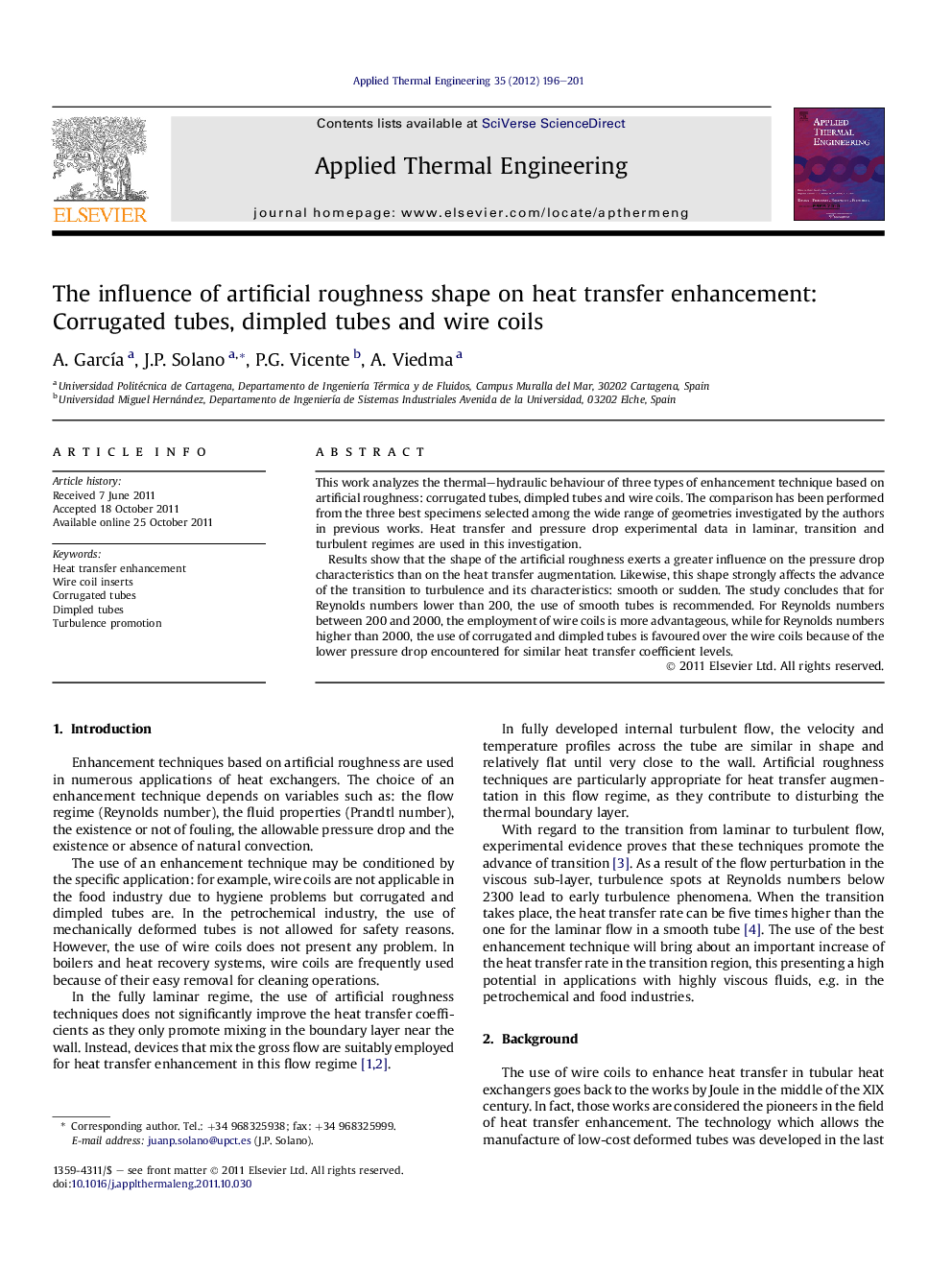| Article ID | Journal | Published Year | Pages | File Type |
|---|---|---|---|---|
| 647499 | Applied Thermal Engineering | 2012 | 6 Pages |
This work analyzes the thermal–hydraulic behaviour of three types of enhancement technique based on artificial roughness: corrugated tubes, dimpled tubes and wire coils. The comparison has been performed from the three best specimens selected among the wide range of geometries investigated by the authors in previous works. Heat transfer and pressure drop experimental data in laminar, transition and turbulent regimes are used in this investigation.Results show that the shape of the artificial roughness exerts a greater influence on the pressure drop characteristics than on the heat transfer augmentation. Likewise, this shape strongly affects the advance of the transition to turbulence and its characteristics: smooth or sudden. The study concludes that for Reynolds numbers lower than 200, the use of smooth tubes is recommended. For Reynolds numbers between 200 and 2000, the employment of wire coils is more advantageous, while for Reynolds numbers higher than 2000, the use of corrugated and dimpled tubes is favoured over the wire coils because of the lower pressure drop encountered for similar heat transfer coefficient levels.
▸ Thermal–hydraulic results of wire coils, dimpled and corrugated tubes are compared. ▸ The influence of the artificial roughness shape on early transition is assessed. ▸ The effect of the enhancement technique on mixed convection is studied. ▸ The artificial roughness shape affects more to pressure drop than to heat transfer. ▸ Recommendations for their eligibility depending on the flow regime are given.
